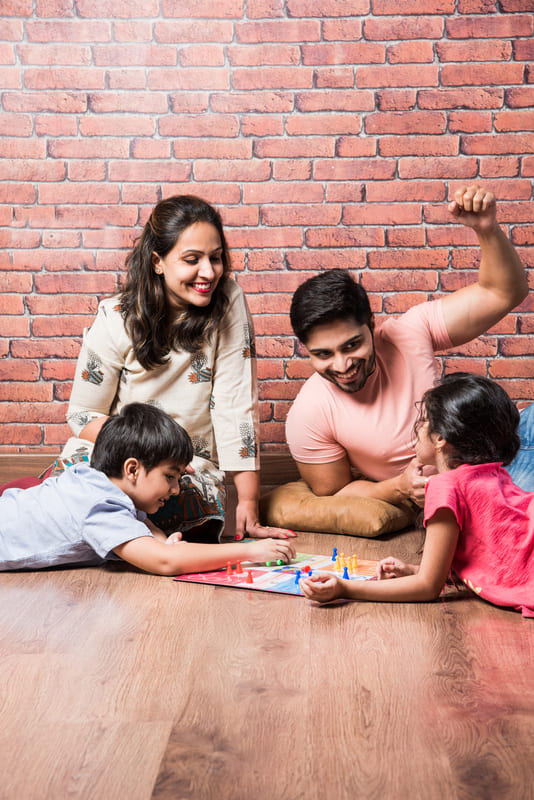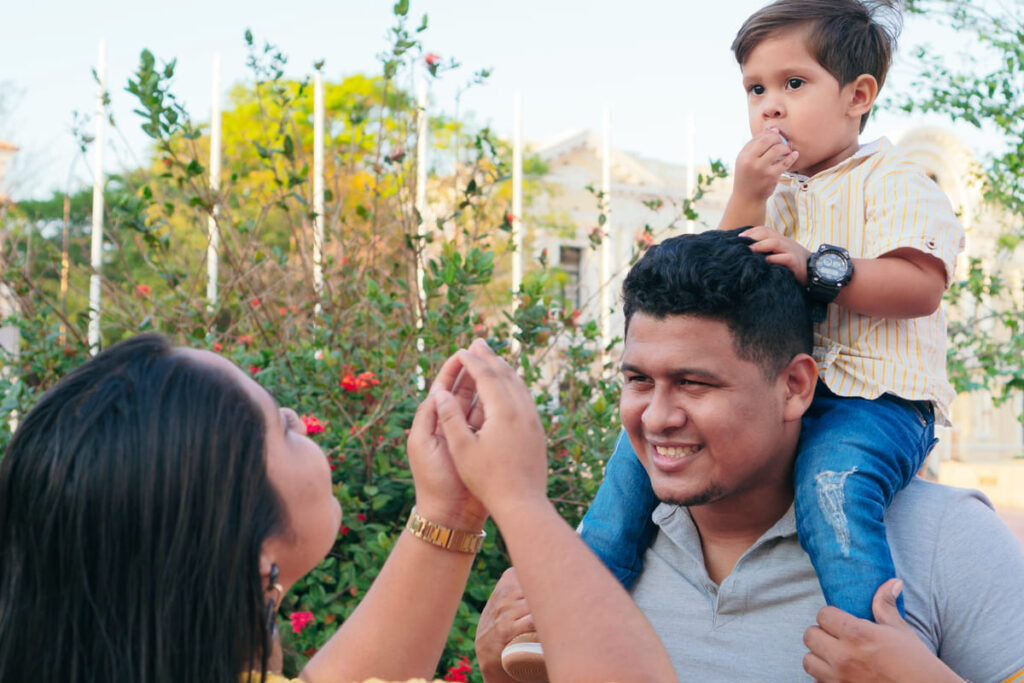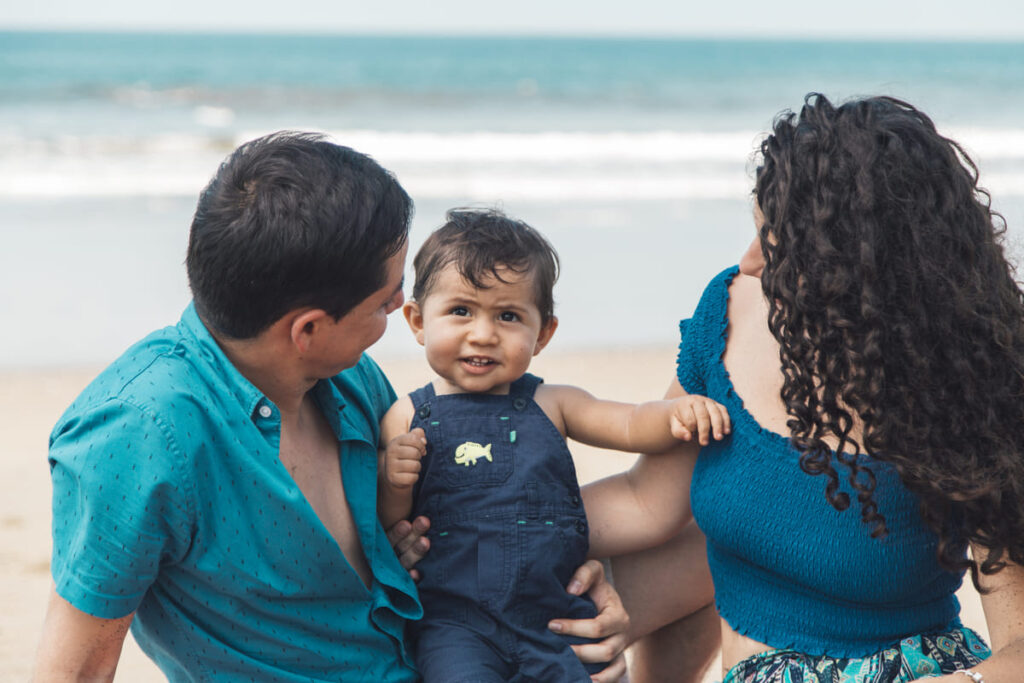The language of motherhood knows only the present – warm skin, steady breaths, beating hearts – while fathers speak in futures, their love a fortress built from worries and what-ifs. She touches the child’s forehead for the hundredth time, her fingers sensitive to each fraction of a degree. He glances at his phone again, researching worst-case scenarios at 3 AM. I’ve watched this scene play out like a carefully choreographed dance – mothers flowing inward toward their sick children, fathers orbiting the edges of the room like anxious satellites. Two different languages of love, spoken simultaneously.
Yesterday, it was the Mehtas with their feverish four-year-old. Mrs. Mehta cradled her daughter while precisely reciting seven days of temperature fluctuations, sleep patterns, and eating habits—a detailed medical diary stored in her heart. Mr. Mehta stood at the door, interrupting only to ask about specialist referrals and long-term immunity concerns: the same love, different dialects.
Modern research in evolutionary biology offers fascinating insights into these behavioural patterns. A groundbreaking study from the Indian Institute of Science, Bangalore, examined stress hormone levels in new parents. The findings revealed that while both parents experienced elevated cortisol levels after childbirth, mothers showed more consistent patterns tied to immediate care needs. At the same time, fathers’ stress responses were more strongly linked to environmental threats and future planning.

This reminds me of our ancient Ayurvedic texts, where the concept of ‘Vatsalya’ (parental love) is described as having dual natures—’Prakasha’ (illuminating) and ‘Rakshana’ (protective). Mothers typically embody more Prakasha qualities, illuminating the child’s immediate world with nurturing care, while fathers often manifest Rakshana, creating a protective shield against future challenges.
In my practice, I’ve noticed how this plays out in subtle ways. Mothers often describe their child’s symptoms with remarkable detail – the exact time of fever spikes, changes in appetite, and subtle mood shifts. They’re like skilled gardeners who notice every new leaf and wilting petal. Conversely, fathers often focus on practical aspects – insurance coverage, school absence policies, and potential long-term health implications. They’re like architects, always planning for structural stability.
A fascinating research paper from the Department of Anthropology at Delhi University studied parental behaviours across different Indian communities. They found that regardless of socioeconomic background, mothers were more likely to engage in immediate caregiving activities, while fathers showed higher engagement in resource-gathering and future-planning behaviours. It’s as if nature has designed a complementary system where both parents contribute vital but different elements to their child’s wellbeing.

I’m reminded of a particular case from my early days of practice. A family would visit regularly for their daughter’s chronic respiratory issues. The mother would bring detailed diaries of symptoms, food intake, and sleep patterns – information as precise as a laboratory log. The father rarely spoke during consultations but silently took notes and emailed me research papers on new treatments and environmental factors affecting respiratory health. Like the double helix of DNA, both strands of parental care were essential for their daughter’s recovery.
The biochemistry of parenting offers another fascinating window into these differences. Recent studies have shown that while both parents experience hormonal changes after having a child, the cocktail of hormones differs significantly. Mothers show elevated levels of oxytocin and prolactin, hormones associated with nurturing and bonding. Fathers, interestingly, show increased vasopressin levels, a hormone linked to protective behaviour and territory defence. It’s as if nature has created a chemical blueprint for these complementary parenting styles.
In my years of practice, I’ve seen how this biological programming interfaces with our modern urban Indian context. Working mothers often express guilt about not meeting traditional nurturing expectations, while professional fathers struggle with society’s emphasis on their provider role. Yet, I’ve observed that the most successful parenting partnerships acknowledge and respect these inherent differences while allowing for individual variation.

Like the traditional Indian thali, which combines different flavours to create a balanced meal, effective parenting requires immediate care and future planning, emotional nurturing, and practical protection. I often tell my patients that parenting is like preparing a complex Ayurvedic formulation—each ingredient has its specific purpose, and the magic lies in their synergy.
The modern Indian family is evolving like a river changing its course while maintaining its essential nature. I’ve seen fathers who are primary caregivers and mothers who are primary providers, yet even in these cases, the underlying patterns of care versus concern often maintain their distinct flavours. It’s as if these tendencies are written in our cellular memory as ancient Sanskrit verses etched on palm leaves.
A recent multicenter study across major Indian cities showed that children who experienced nurturing and protective parenting styles showed better emotional resilience and academic performance. It’s like a perfect cup of masala chai – you need the soothing warmth of milk and the invigorating spices to create the ideal blend.
A mother’s hands remember every fever her child has ever had, while a father’s mind rehearses every fever that might come. The old books call this dharma, and the new books call this evolutionary biology. The child needs the now of the mother’s touch and the tomorrow of the father’s fears to survive in a world that has always been beautiful and brutal.
Then I remembered: Nature didn’t make one parent better at loving—it made two parents better at helping their children survive.

